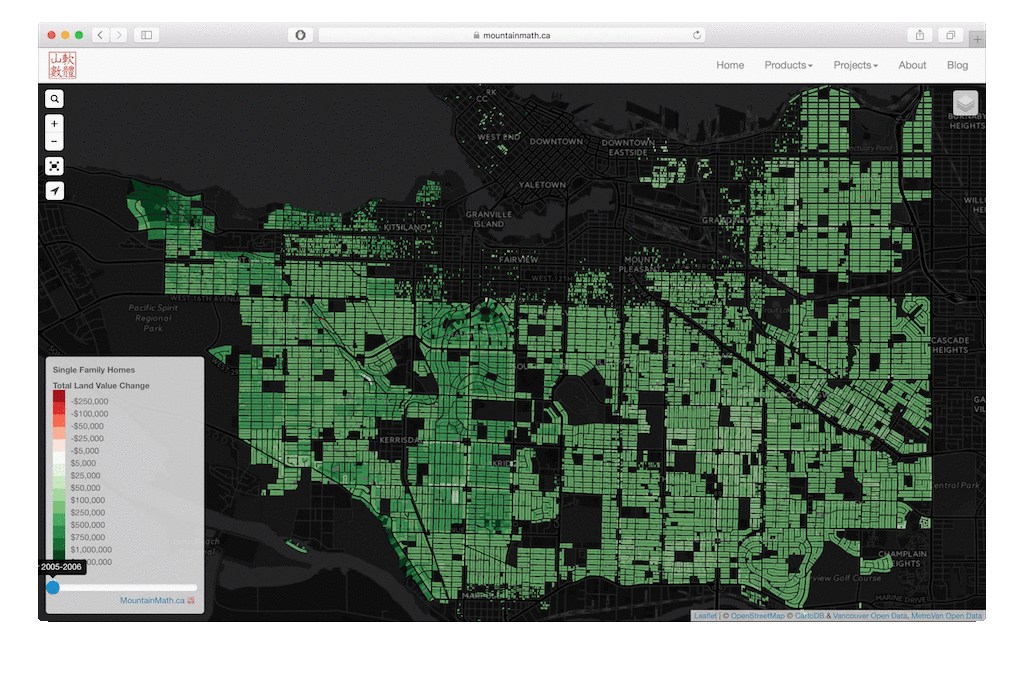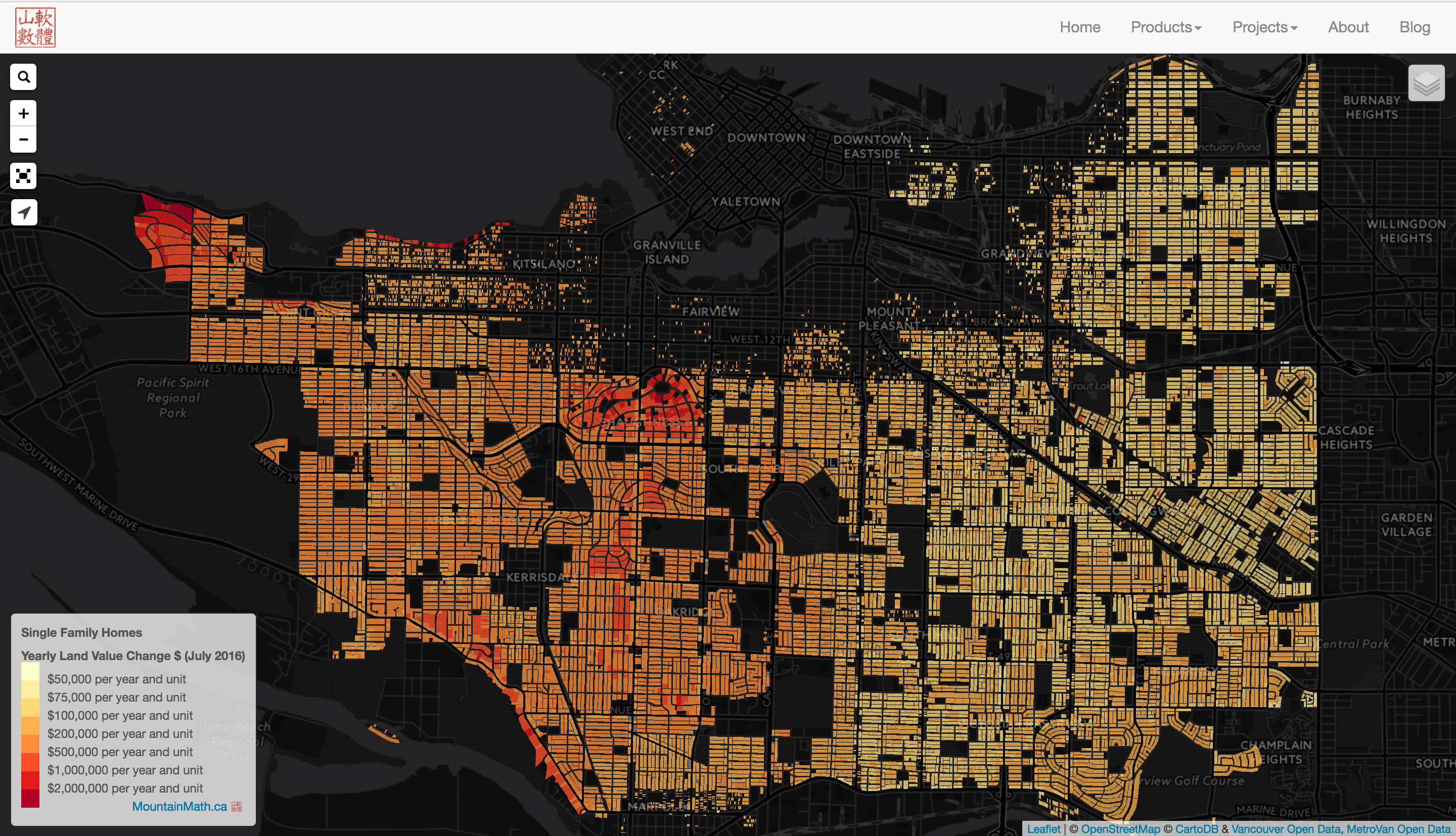Almost a year has passed since we first noticed how sitting on single family homes and twiddling thumbs generates more income than working. And not just at the level of individual single family households. In the City of Vancouver, the cumulative land value gains of just the single family homes eclipsed the cumulative taxable earnings reported to the CRA for the entire population.
With the new assessment data available now, it is time to run the numbers and see how our thumb-twiddlers fared vs workers this year. If you thought last year’s twiddling thumbs returns were crazy high, you better hold onto your hats!
Work
Not much changed in terms of the income people earned. CANSIM does not make the taxfiler data freely available at the municipal level, we we will again estimate the cumulative income for residents of the City of Vancouver by using 2010 Census data and extrapolating by applying the Metro Vancouver rate of income growth.
This way we get a cumulative $22.3bn pre-tax or $18.6bn after-tax income in 2010, which grew around 13% between 2010 and 2014. Extrapolating this for another two years to 2016 we estimate an income growth of around 20% since 2010, which then pegs the cumulative income for the City of Vancouver at $26.8bn pre-tax or $22.3bn after-tax (ignoring financial drag and other issues).
Twiddling Thumbs
Let’s compare this to how much Vancouver home owner households “earned” last year by twiddling thumbs while sitting on their property. To keep things simple and consistent with last year, we again focus on just the single family homes (SFH). And again, we only consider land value changes, after all changing the building value because of renovation or rebuilding certainly does not happen by twiddling thumbs.
The median SFH land value increased was $435,000 (the average was $594,005), for a cumulative land value increase of $46.7bn, accounting for about half of the total land value increase of the City of Vancouver or two thirds of the land value increase for residential (and mixed) land uses.
So while last year the twiddling thumbs return were still comparable to the cumulative income in the City of Vancouver, this year the thumb twiddlers blow the income earners out of the water. Just by by twiddling their thumbs, the SFH property owners alone earned twice as much as the entire population of the City of Vancouver did by actually working. And in most cases homeowners won’t pay taxes on their thumb-twiddle earnings, although the CRA recently made it harder with their new reporting rules.
We are glossing over a couple of details here, for example the numbers are not adjusted for inflation, and costs like property taxes and property transfer tax are not taken into account.
Of course, comparing income from work to income from twiddling thumbs is not entirely fair. The income from twiddling thumbs is frozen in the property until the owner sells. But gains accumulate over the years, and eventually everyone sells and realizes the gains (or passes them on to the next generation). And it’s always good to remember that “house-rich cash-poor homeowners are one transaction away from simply being rich renters”.
The Long Term
 Most people don’t trade houses like stocks, so what really matters is the long term gains, not the year to year changes. The 11 year timeframe for which we have data roughly matches the average holding time for a single family house. The year over year changes in land value vary dramatically, as the image shows and can be explored further using the interactive version.
Most people don’t trade houses like stocks, so what really matters is the long term gains, not the year to year changes. The 11 year timeframe for which we have data roughly matches the average holding time for a single family house. The year over year changes in land value vary dramatically, as the image shows and can be explored further using the interactive version.
Over 11 years, the single family home land value quadrupled. The median (nominal) single family home land value increase over that timespan was $1,233,000, or $112,000 per year. Broken down further, that’s $2,339,000 ($213,000 per year) for the median west side home and $1,031,000 ($94,000 per year) for the median east side home.
 We mapped the land value gain averaged over 11 years. We can observe that the average yearly increase depends on the square footage of the property as well as the location. The rates are mostly uniform throughout the city (with some notable exceptions), but properties starting out with a higher value will see higher total value increases. It’s probably fair to say that even using the 11 year average, most homeowners “earned” more money twiddling thumbs than pursuing a more traditional employment.
We mapped the land value gain averaged over 11 years. We can observe that the average yearly increase depends on the square footage of the property as well as the location. The rates are mostly uniform throughout the city (with some notable exceptions), but properties starting out with a higher value will see higher total value increases. It’s probably fair to say that even using the 11 year average, most homeowners “earned” more money twiddling thumbs than pursuing a more traditional employment.
Hourly Rate for Twiddling Thumbs
Using the same methods as last year we can compute the hourly earnings of thumb twiddlers. For the July 2016 to July 2017 timeframe, thumb twiddlers in the City of Vancouver averaged a tidy $239 per hour. Using the 11 year averaged numbers instead of focusing on just the last year we still get a healthy average thumb twiddling rate of $62 per hour.
Another bumper year for thumb twiddlers! Considering to change your line work to thumb twiddling? To bad thumb twiddling is so unaffordable!
Data Dump
Here is the raw output of the stats run on the single family properties for anyone interested.
SFH Land Value Rise (2016 - 2017)
- City Wide: Average $594,005 Median $435,000, Count: 78648, Total: $46,717,325,799, Hourly: $239
- Eastside: Average $373,306 Median $358,000, Count: 47988, Total: $17,914,233,199, Hourly: $150
- Westside: Average $939,435 Median $866,000, Count: 30660, Total: $28,803,092,600, Hourly: $378
SFH Land Value Rise (2006 - 2017)
- City Wide: Average $153,777 Median $112,090, Count: 77809, Total: $11,965,271,272, Hourly: $62
- Eastside: Average $96,892 Median $93,727, Count: 47545, Total: $4,606,748,985, Hourly: $39
- Westside: Average $243,144 Median $212,636, Count: 30264, Total: $7,358,522,287, Hourly: $98
The total number of units for the 2006 to 2017 analysis are a little lower since not all properties can be traced over that time period without resorting to more tedious analysis.
Reuse
Citation
@misc{bumper-year-for-thumb-twiddlers.2017,
author = {{von Bergmann}, Jens},
title = {Bumper {Year} for {Thumb} {Twiddlers}},
date = {2017-01-18},
url = {https://doodles.mountainmath.ca/posts/2017-01-18-bumper-year-for-thumb-twiddlers/},
langid = {en}
}
